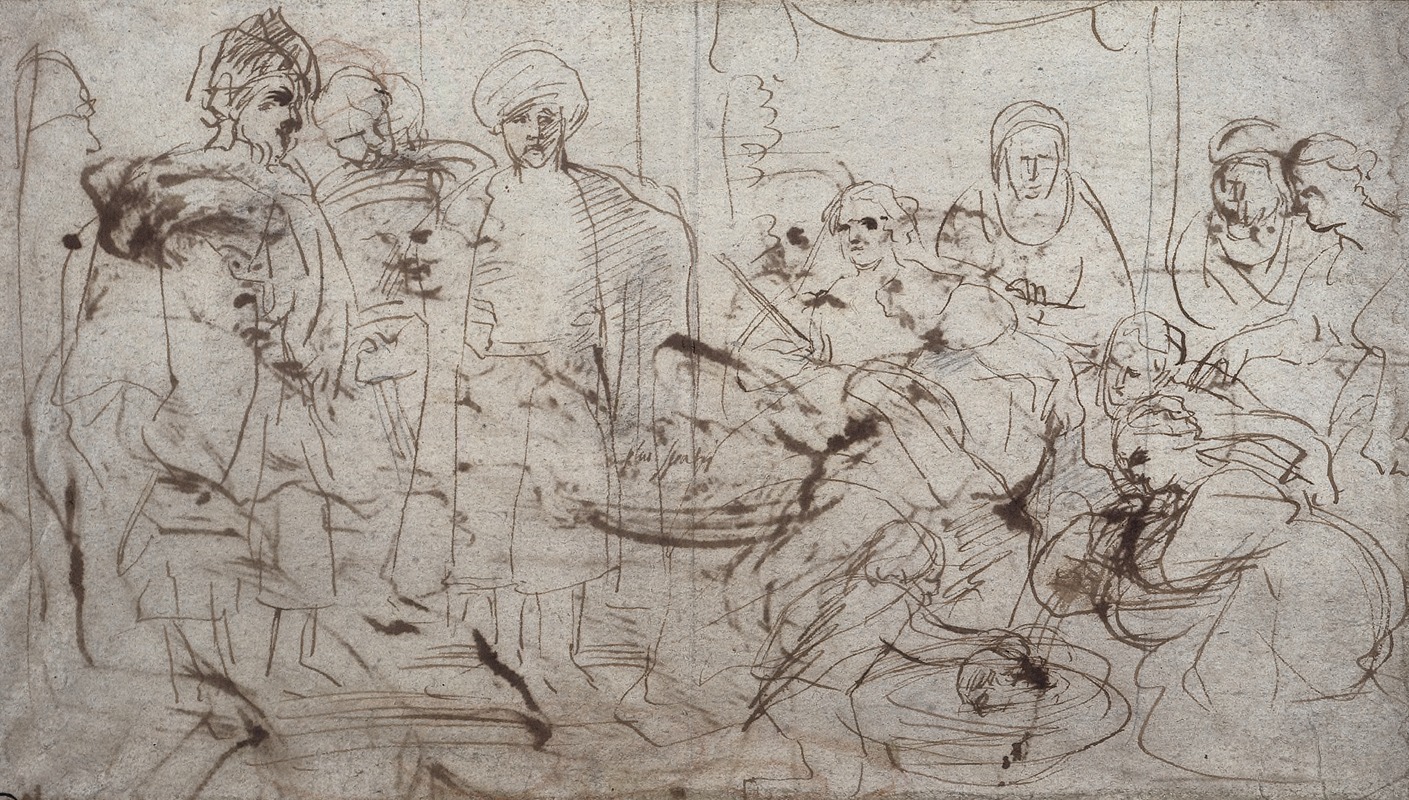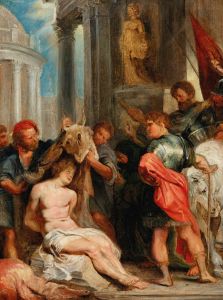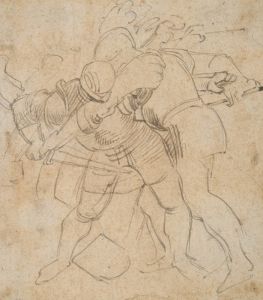
Tomyris with the Head of Cyrus
A hand-painted replica of Peter Paul Rubens’s masterpiece Tomyris with the Head of Cyrus, meticulously crafted by professional artists to capture the true essence of the original. Each piece is created with museum-quality canvas and rare mineral pigments, carefully painted by experienced artists with delicate brushstrokes and rich, layered colors to perfectly recreate the texture of the original artwork. Unlike machine-printed reproductions, this hand-painted version brings the painting to life, infused with the artist’s emotions and skill in every stroke. Whether for personal collection or home decoration, it instantly elevates the artistic atmosphere of any space.
"Tomyris with the Head of Cyrus" is a painting created by the Flemish Baroque artist Peter Paul Rubens. The artwork depicts the legendary moment from ancient history when Queen Tomyris of the Massagetae, a nomadic Scythian people, ordered the decapitated head of Cyrus the Great, the founder of the Achaemenid Empire, to be submerged in a vessel of blood. This act was intended as a symbolic punishment for Cyrus's invasion of her territory and the death of her son, Spargapises, during the conflict.
The painting is believed to have been completed in the early 17th century, during Rubens's prolific career. Rubens was known for his dramatic compositions, vivid use of color, and dynamic figures, all of which are evident in this work. The scene is rendered with intense emotional and physical energy, characteristic of Rubens's style. Tomyris is portrayed as a resolute and commanding figure, emphasizing her role as a powerful leader exacting justice.
The historical narrative behind the painting is derived from ancient accounts, most notably those of the Greek historian Herodotus. According to Herodotus, Cyrus sought to expand his empire by conquering the Massagetae, but his campaign ended in failure when Tomyris's forces defeated the Persian army. After Cyrus was killed in battle, Tomyris fulfilled her vow to punish him for his aggression and for the loss of her son.
Rubens's interpretation of the story reflects the Baroque era's fascination with dramatic historical and mythological themes. The painting captures the moment with theatrical intensity, focusing on the moral and emotional weight of Tomyris's actions. The composition highlights the contrast between the queen's stoic determination and the gruesome reality of the severed head, underscoring the themes of justice, vengeance, and the consequences of ambition.
The exact location of "Tomyris with the Head of Cyrus" is not definitively established, as Rubens's works are held in collections worldwide, and some attributions have been debated. However, the painting remains an important example of Rubens's ability to bring historical and legendary subjects to life through his masterful technique and storytelling.
This artwork is a testament to Rubens's skill in blending historical narrative with the emotional and visual drama that defined the Baroque period.






![One of two colossal statues of Rameses [sic] II. Entrance to the Temple at Luxor.](/imgs/217522/s/david-roberts-one-of-two-colossal-statues-of-rameses-sic-ii-entrance-to-the-temple-at-luxor-473c42e1.jpg)











